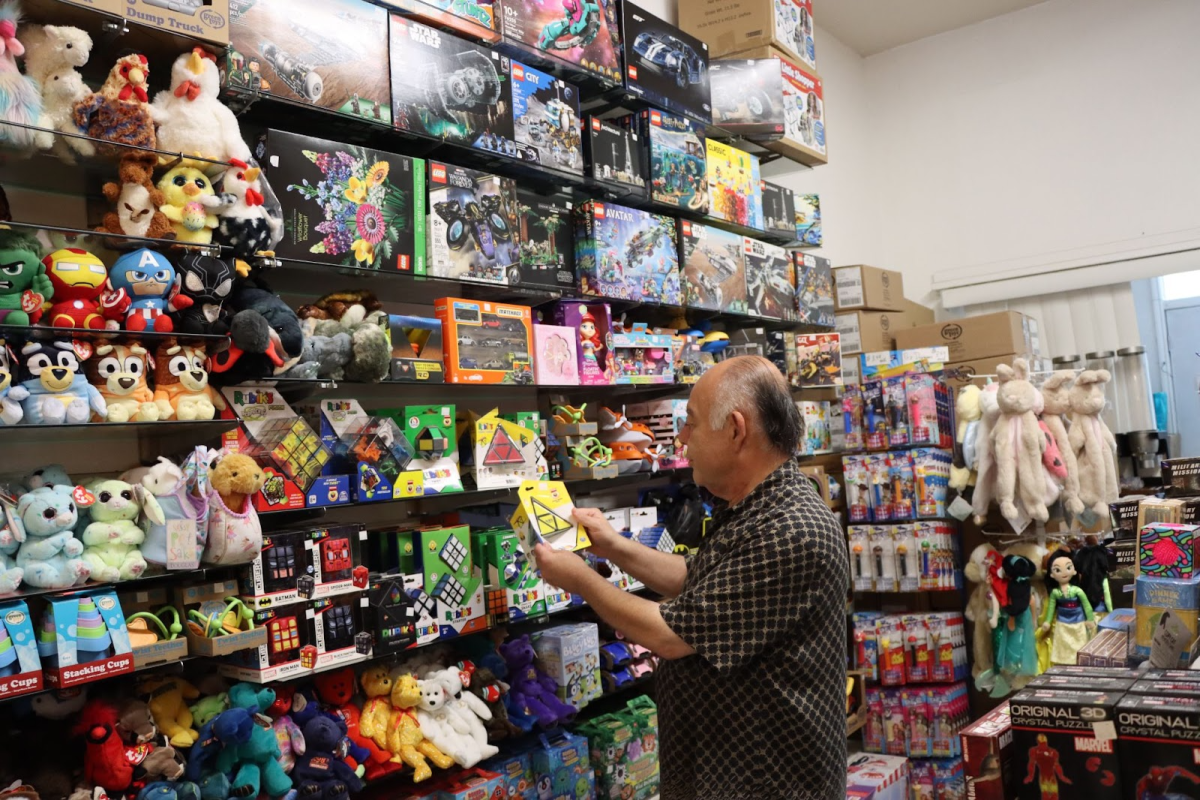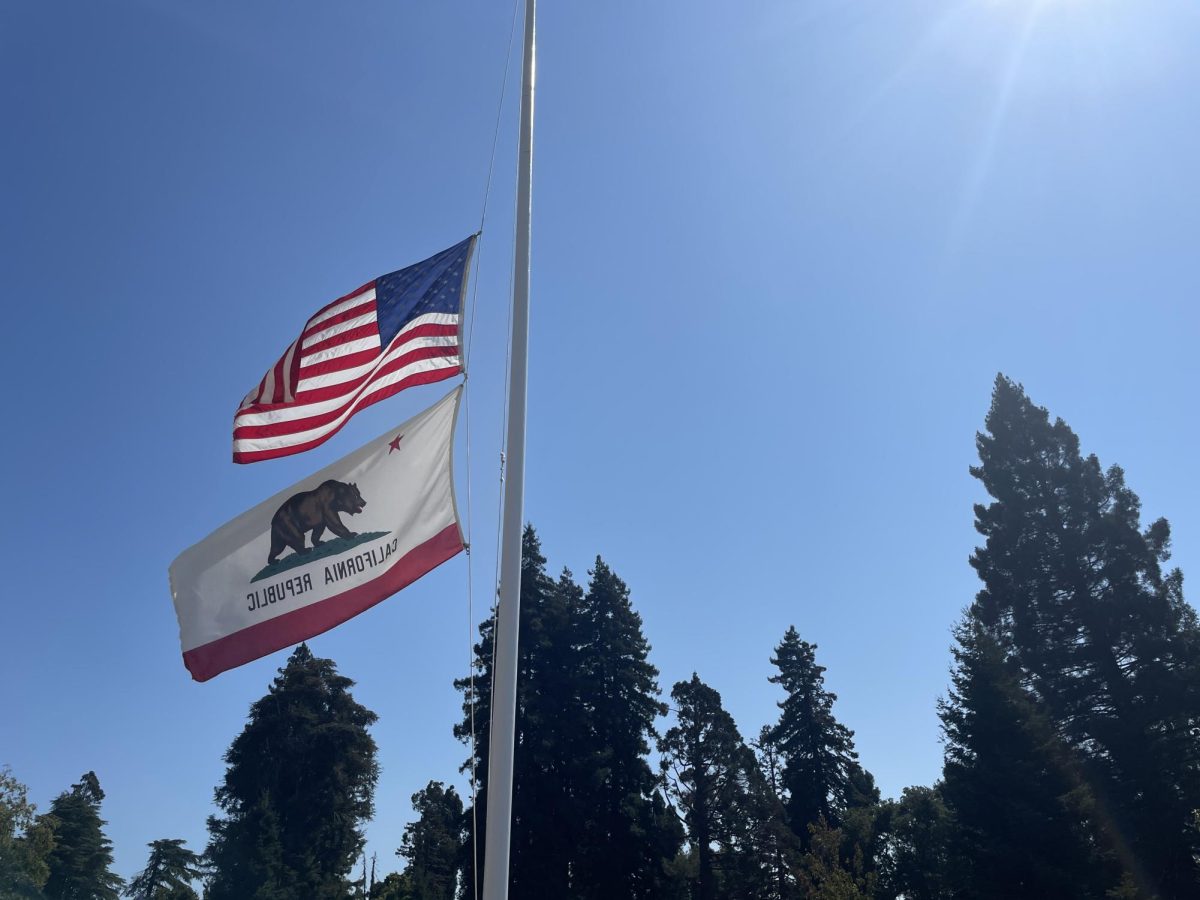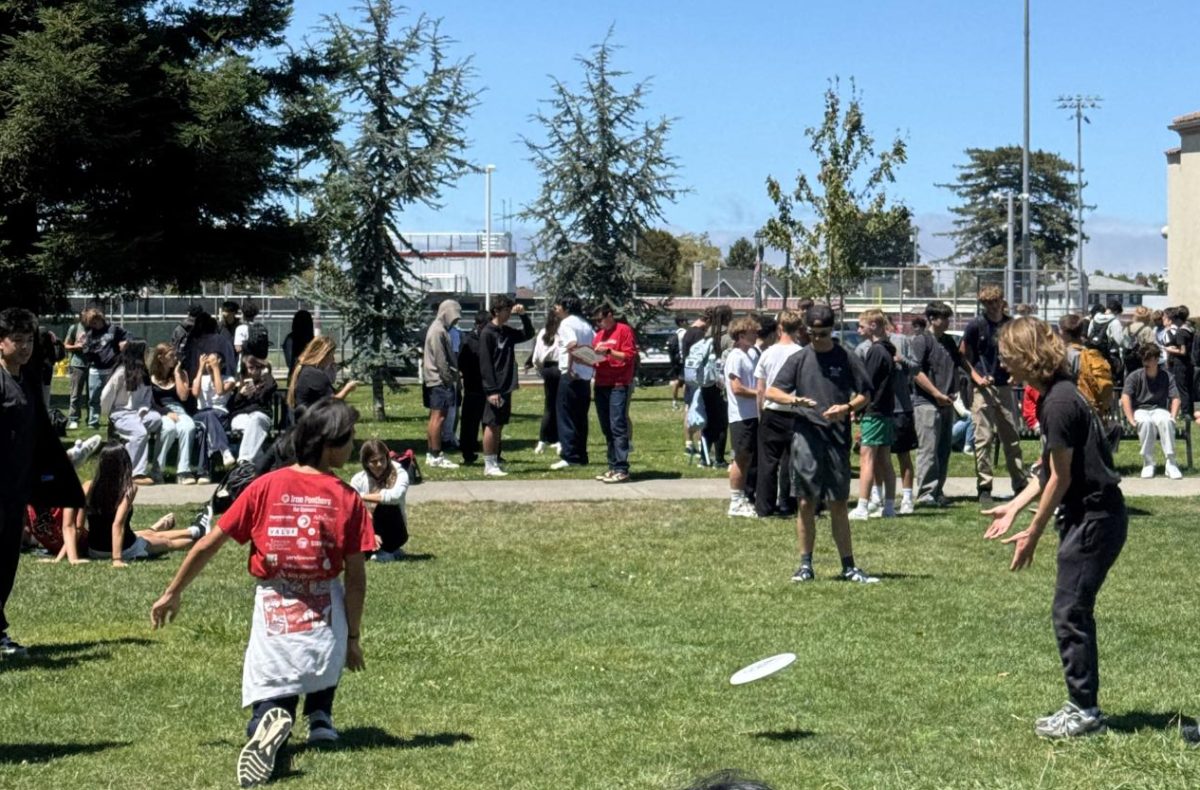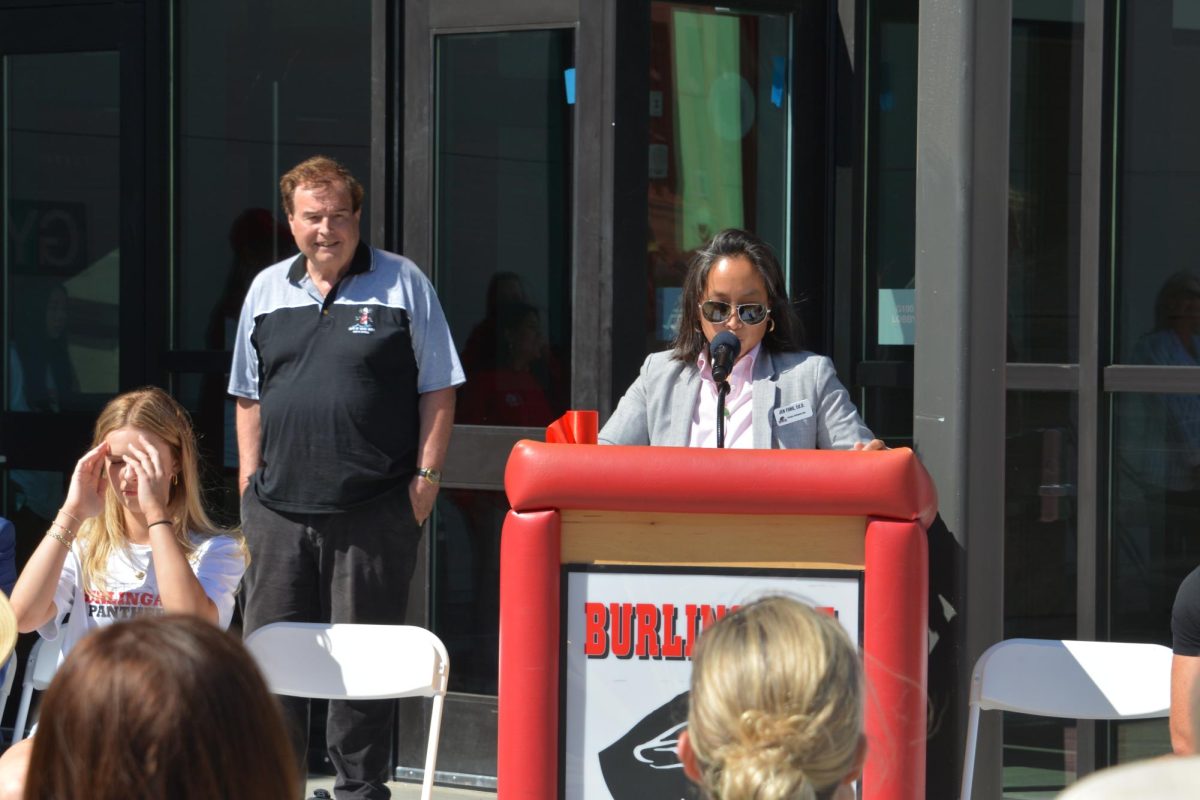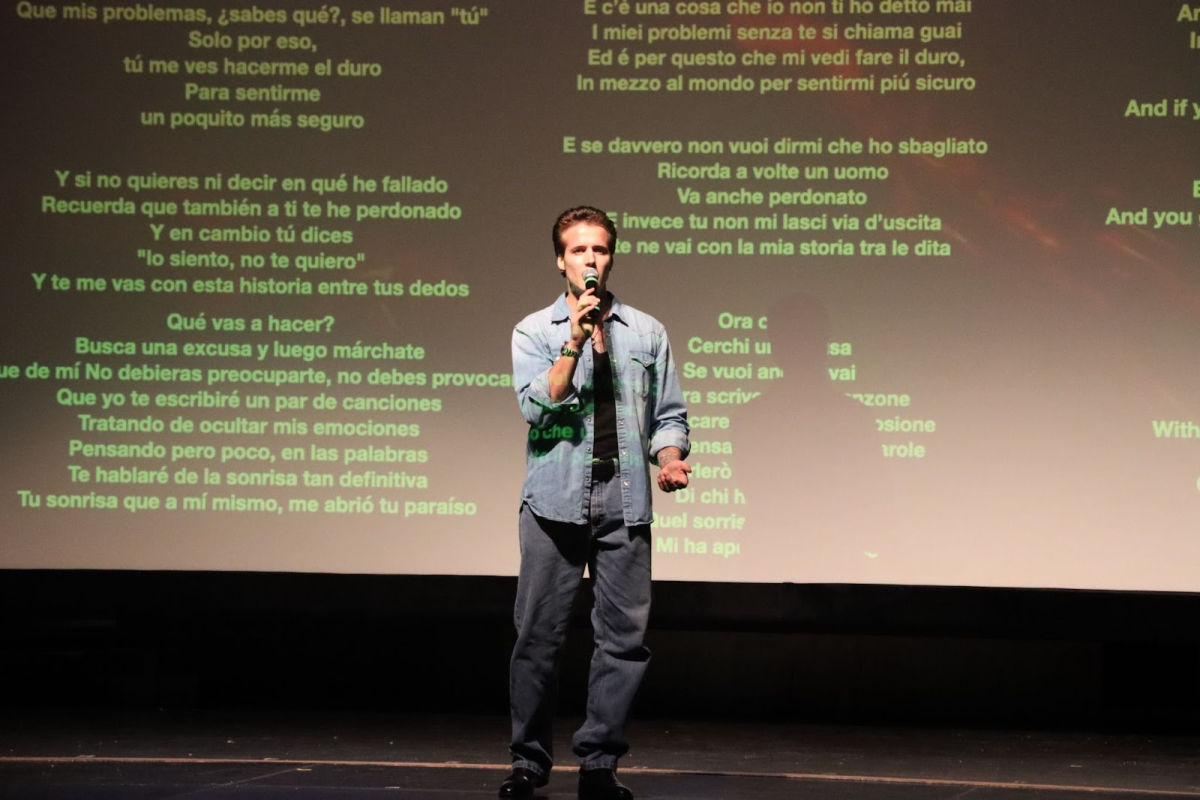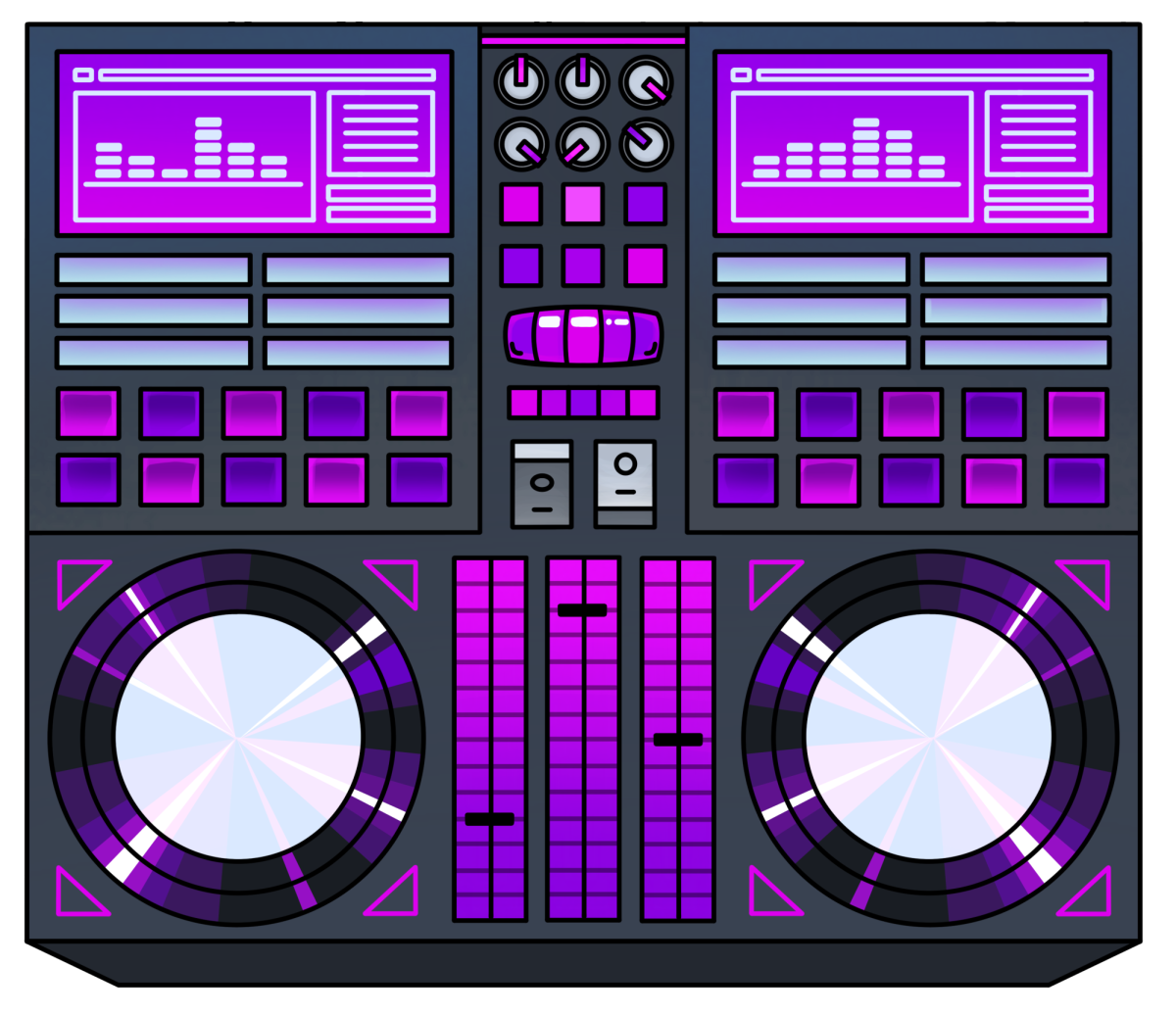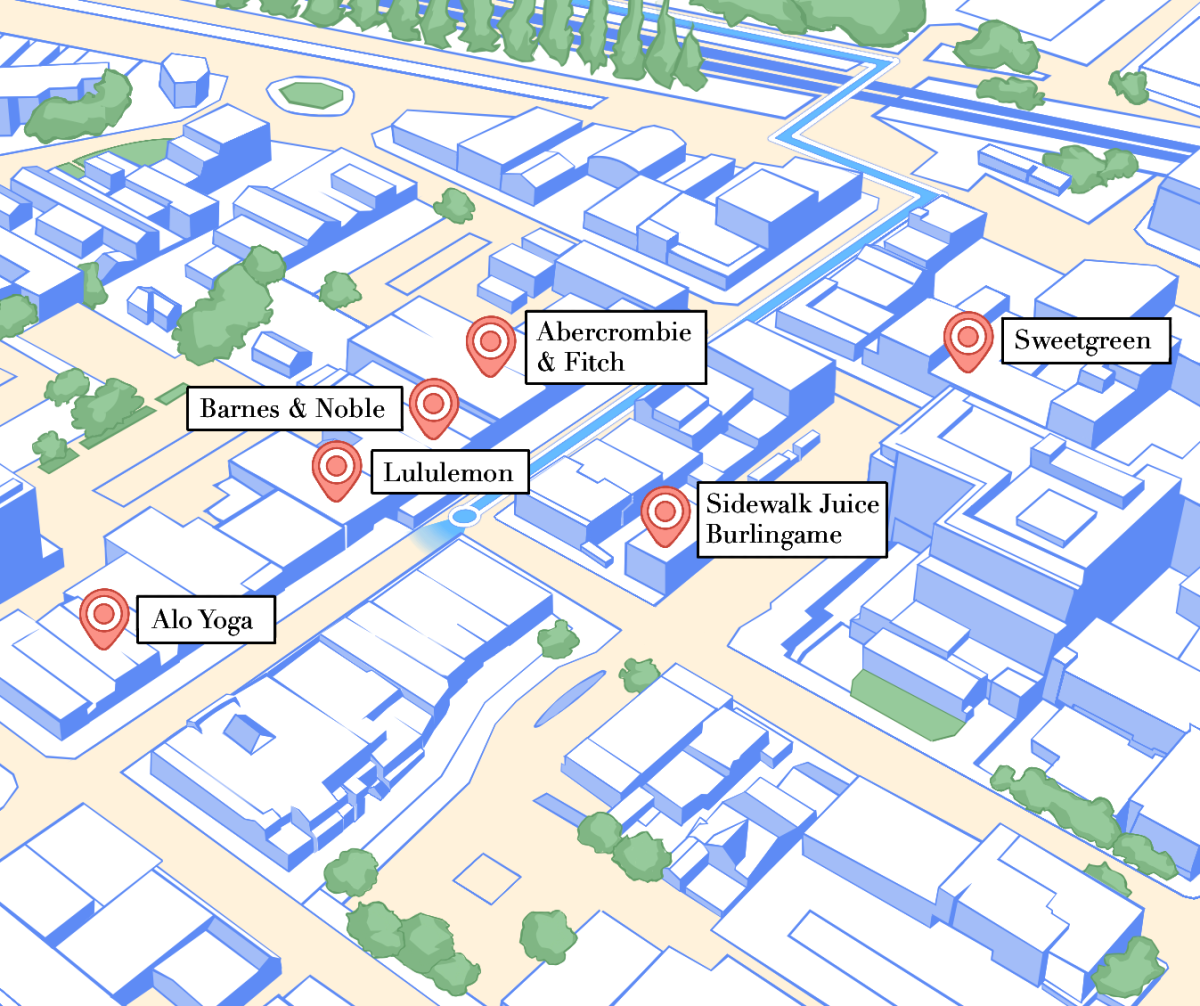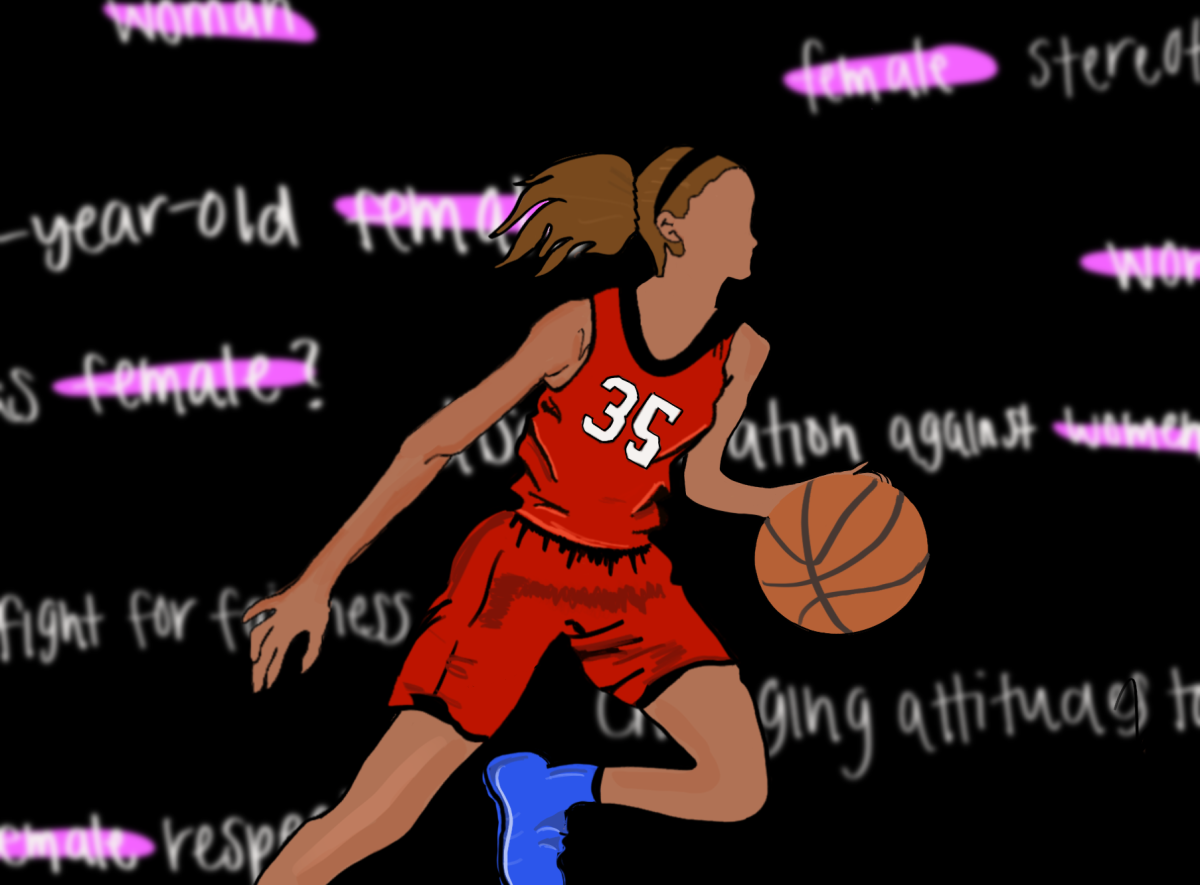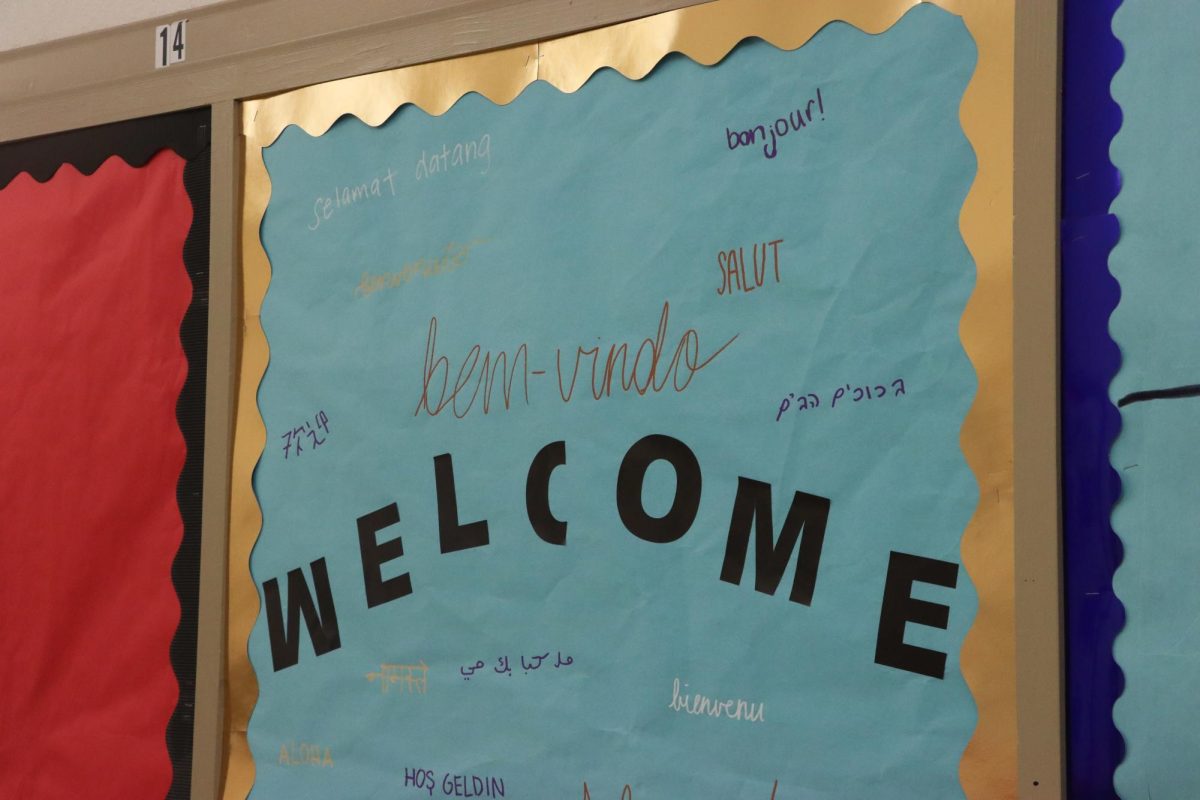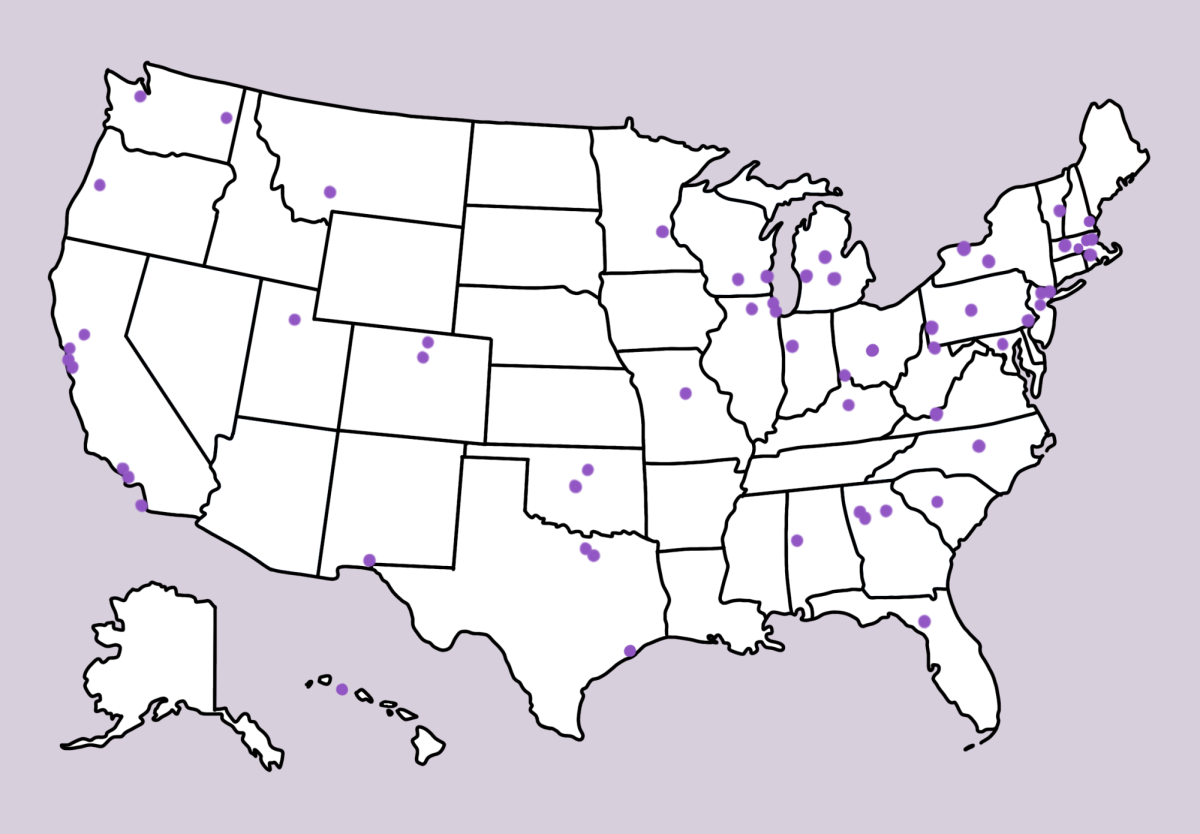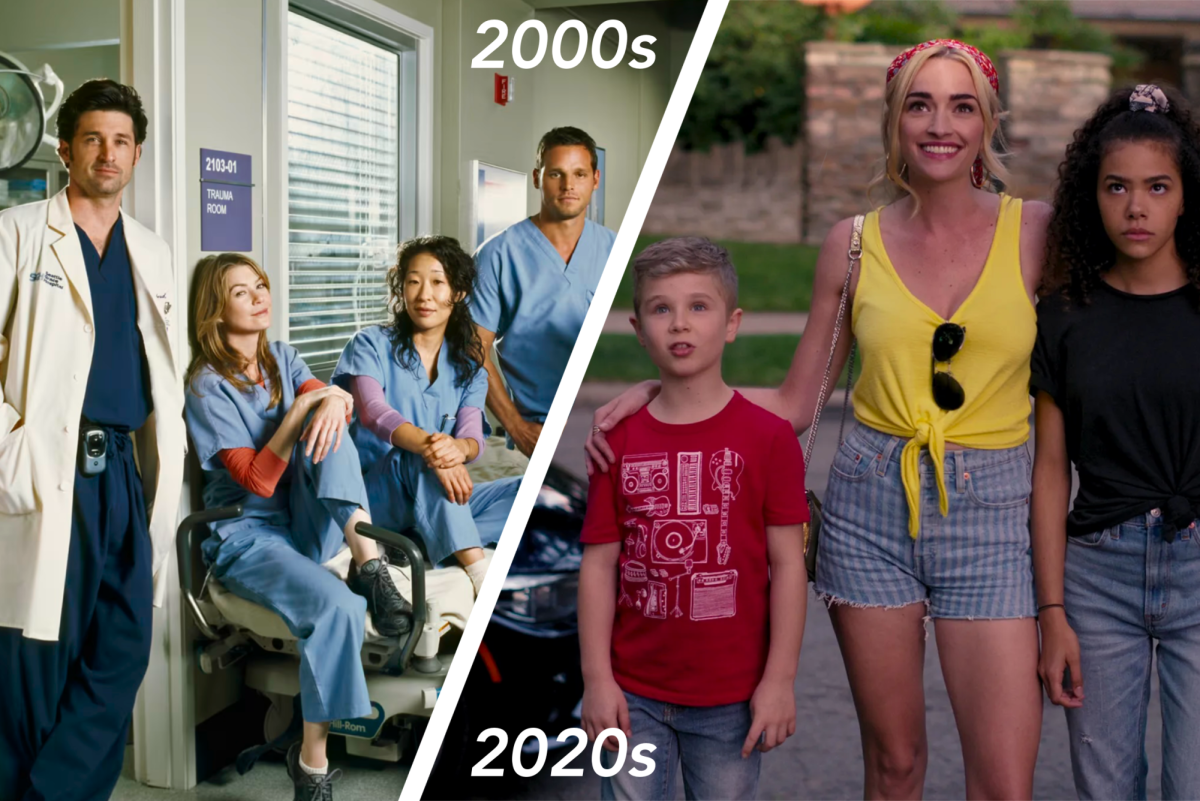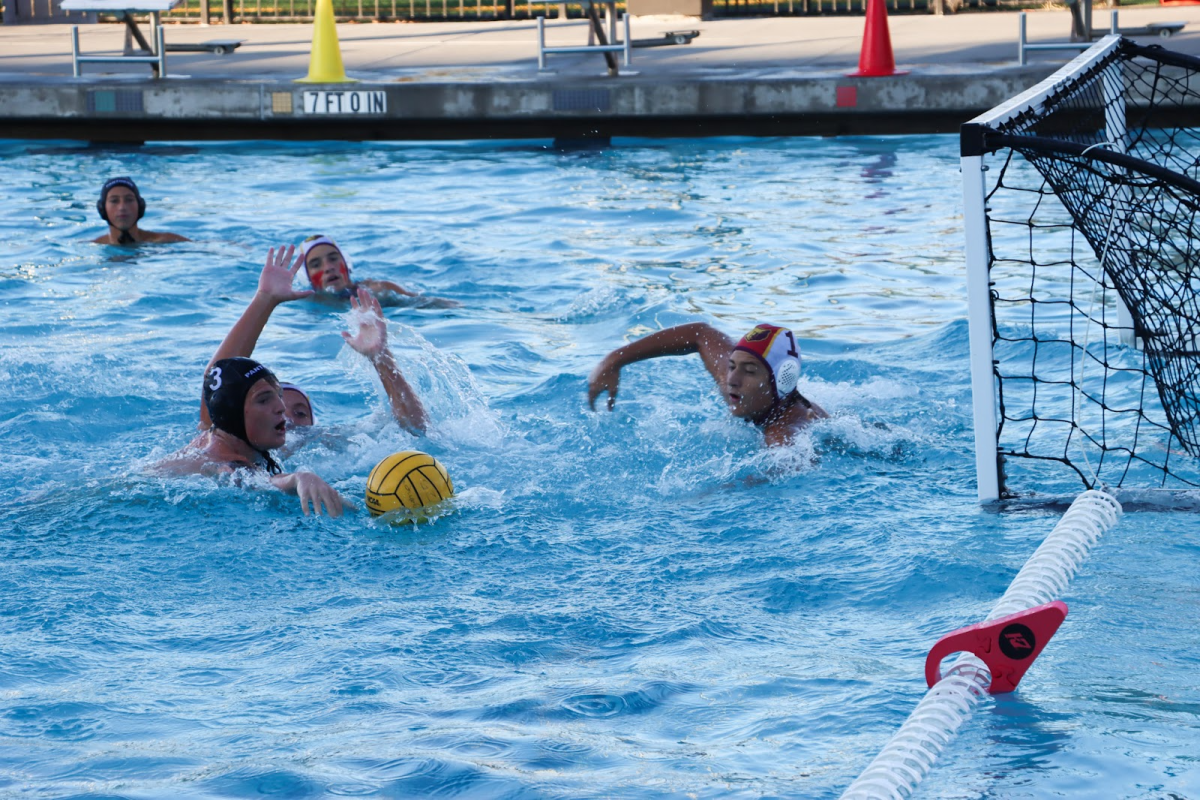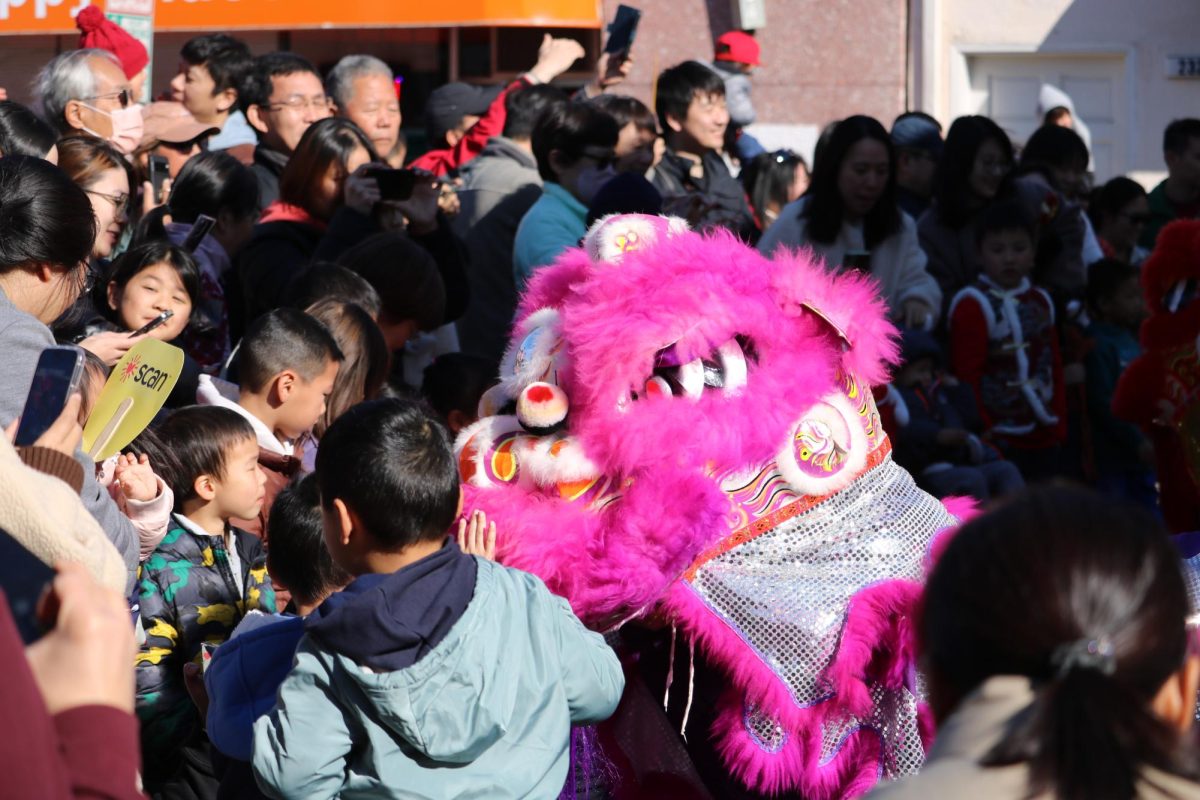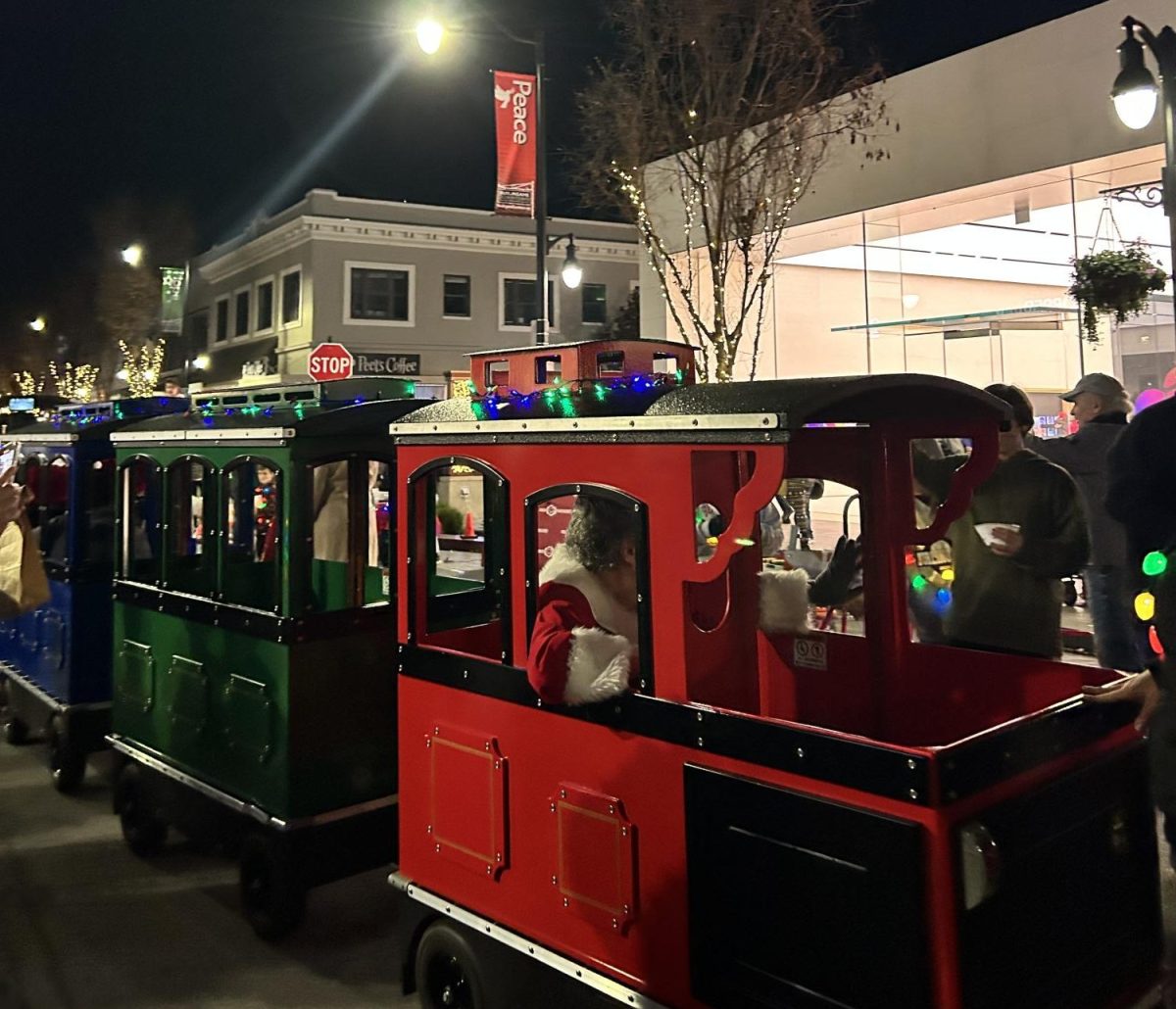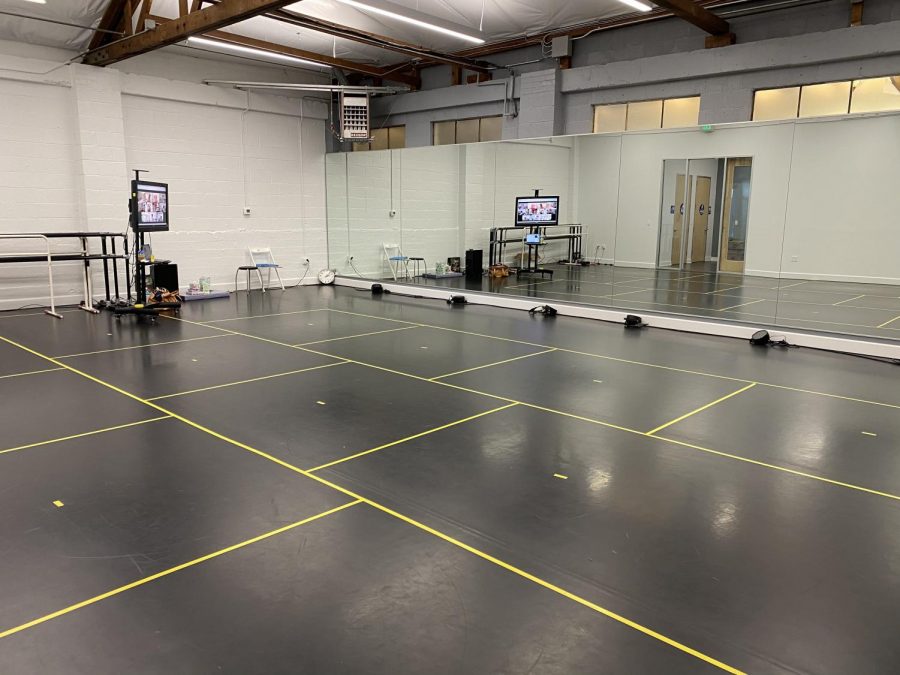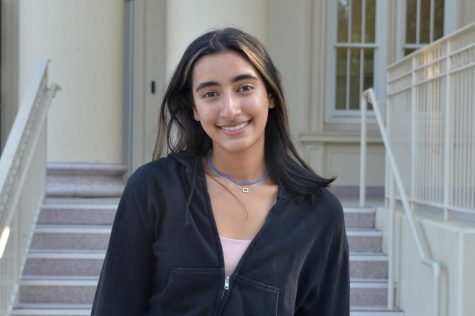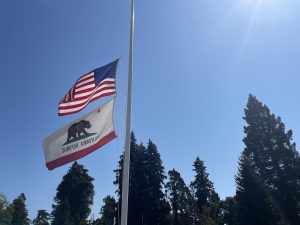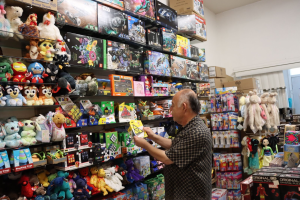The pandemic challenges the dance community’s resilience
Dance studios follow COVID-19 safety protocols, including temperature checks, sanitization and six foot boxes.
March 29, 2021
Dancers during quarantine have had the ability to continue improving and practicing in a safe environment. Unlike other athletes, dancers can take classes virtually and while it’s not ideal, it is a chance to connect the dance community. West Coast Dance Conservatory , located in Millbrae, has been fluctuating between in-person dance and Zoom classes since last March with strict safety protocols. They also offer hybrid classes, where teachers have a headset and a large TV screen to where they instruct students to the best of their abilities. While there haven’t been issues regarding COVID-19 cases thus far, dancers are still challenged with a loss of motivation due to the reduced connection with the dance community.
“The younger kids’ attention span is so short, especially when they’re taking class at home, that you have to change things every two to three minutes to keep them engaged, and you have to be a little bit more over the top and a little bit more silly and more extravagant than you would if they’re all in the studio,” West Coast Dance Conservatory studio owner, Angela Holmes, said.
Taking classes virtually yields distractions from parents, siblings and even pets that can take away from the collective energy dancers feel in the studio. This new era of dance has taken away various aspects dance has to offer.
“We teach so much about friendships and community and hard work and passion, we teach so many different things and I think that people lost sight of that in the pandemic … I hope that when the pandemic is over, people will start to remember activities are not necessarily just what they are, there’s stuff behind it that makes it matter,” Holmes said.
Dancers, while physically allowed to continue dancing, have lost many opportunities dance has given them in the past. While West Coast Dance Conservatory has been able to operate, other studios struggled to establish pandemic-safe dance classes. Kirkpatrick’s School of Dance, located in San Mateo, ended up closing in 2020, leaving their students to find new places to dance. San Mateo High School sophomore Ellie Gatoff was dancing at Kirkpatrick’s before its closure, and had a hard time finding a new studio until she transferred to Heartbeat, another local dance studio.
“I was motivated to find another studio or just to try to keep dancing, but there weren’t a lot of options in the middle of the year, so that’s kind of when I lost motivation,” Gatoff said.
Burlingame junior Ellie Chesnosky, also danced at Kirkpatrick’s prior to the pandemic, and continued to do so after the studio closure through private classes with a previous dance teacher, separate from the studio. Chesnosky and her friend take outdoor classes at their own convenience.
“My mental health hasn’t been that great, especially because of the pandemic and not being able to see people; dance has really helped with it,” Chesnosky said.
Chesnosky’s continued motivation to keep dancing has allowed dance to remain a constant — maintaining a sense of normalcy in her life. Dance has also given her the opportunity to exercise when distance learning promotes a sedentary lifestyle. Not only has a lack of motivation kept dancers from dancing, limited and inadequate dance space has deprived dancers of their practice.
“I have my own room with a good amount of space, but it’s still not really a sufficient area to dance or to practice [in] … I wish I could continue [dancing] during the pandemic, but it’s just logistically so difficult to deal with,” Burlingame senior dancer Kendal Wang said.
One of the biggest challenges over Zoom has been limited space to fully engage with dances and feel the dance atmosphere. Dance studios can only do so much to overcome this challenge, especially when families have different levels of comfort with the idea of in-person classes.
Once the pandemic subsides, studio owners, teachers and dancers alike will be able to value the dance space and community as an outlet of expression after its absence for over a year. While this period of time has created hardships and tested dancers’ motivation, it has forced their appreciation and gratitude to the lessons and enjoyment hobbies provided that were taken away.
Note: Safiya Loomba had taken part in dance classes at both Kirkpatricks and West Coast Dance Conservatory.


